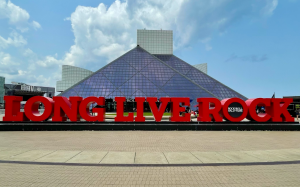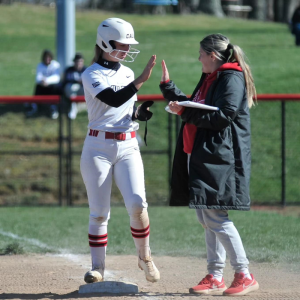National Conventions Done, On to the General Election
September 9, 2020
August 2020 marked the official beginning of the general election campaign as the Democratic and Republican National Conventions were conducted. The Democratic National Convention, according to tradition, occurred first from Aug. 17-20 in Milwaukee, Wisconsin, and around the country. The Republican National Convention occurred from Aug. 24-27 in Washington, D.C., and around the country. It is tradition for the opposition party to hold their convention first, and the incumbent’s party to hold their convention second.
The Democratic National Convention formally saw the party nominate former Vice President Joseph R. Biden Jr. for President of the U.S. and California Senator Kamala Harris for Vice President of the U.S. The Convention was held over four days in a totally virtual format, streaming online and on multiple TV channels. Democrats sought to cast the election as a referendum on President Trump’s handling of the coronavirus pandemic and subsequent economic collapse, as well as his handling of race and police-related issues in the aftermath of the murder of George Floyd. They sought to create an atmosphere of hope and unity to create a stark contrast between them and the chaos and divisiveness of the President and his party. While the convention was unusual in format due to the ongoing pandemic, I feel it was operated and executed well. The Democratic Party did a very good job of highlighting the diversity that is the U.S. The roll call vote to formally nominate Biden was done with delegates in their home state, territory or district. They showed off their people and culture and what their state is about as they awarded their votes to either Biden or Sanders, who was nominated as a formality.
There was, however, a big component missing from the convention: policy and a vision. The convention is a great place to lay out the policies and the vision of the top of the ticket for America if elected and was noticeably absent from the convention speakers, and Biden and Harris themselves. The convention is a part of the campaign process where the candidates and other speakers are supposed to hype up and bring excitement to the policies and vision of the candidates. Instead, they focused on the incumbent’s policies. They discussed the President and his record and what he has done and why it was wrong but did not advocate for their own policies or describe how they will fix the problems being faced by the American middle class. I truly believe that this was a critical error, and a huge missed opportunity. They could have highlighted any of Biden’s many plans for if he is elected, but didn’t. They have enabled Biden’s opponents and critics to set the narrative on his vision and his policies, and I think this will be a fatal error.
The Republican National Convention formally saw the party formally re-nominate incumbent President Donald J. Trump for President of the U.S. and Vice President Mike Pence for Vice President of the U.S. The GOP’s convention was also held in a virtual format, with it being streamed online and on television. Convention speakers were all either across the country or in Washington D.C. The Republican Party sought to cast the election as a referendum on socialism, claiming that if Biden is elected, members of the “radical left” will be in charge, such as Pelosi, Sanders and “The Squad.” Convention speakers also focused hard on policies and accomplishments of the president during his first term, from cutting taxes to creating opportunity zones to various foreign policy accomplishments. They did well at harping on the president’s achievements during his first term and reminding voters that he will continue to put America first and continue the successes he has had in his second term.
There were, however, two problems with the Republican National Convention: lack of vision for a second term and potential Hatch Act violations. At the convention, the Republican Party focused on the past four years but was very limited in describing what the next four years would look like if Trump is re-elected. This was not unexpected, however, as the president was also unable to provide a clear vision of second-term goals in an interview he participated in last month as well. They gave a vision of defeating the coronavirus and rebuilding the economy but did not give details as to how that was going to be accomplished. They talked about Biden’s failures in the past and why he would be bad but did not provide that second term vision that they could then bring about excitement for.
There are also questions surrounding the Hatch Act and State Department policies. Secretary of State Mike Pompeo spoke at the convention in a video format from Jerusalem. State Department policies prohibit officials from participating in political activities while abroad or while working on official state department business. The Hatch Act also prohibits civil service employees that work in the executive branch from engaging in some political activities. It also prohibits political activity from being held on government property. President Trump and First Lady Melania Trump spoke at the convention from the White House. My interpretation of the law, while not a lawyer, is that this is a violation of federal law. It wouldn’t have been difficult either for the president and first lady to speak from a different venue. They could have spoken from the same venue as so many other speakers, including Sen. Tim Scott and former UN ambassador Nikki Haley.
Overall, I feel that the conventions were executed well, especially given the circumstances and restrictions associated with the ongoing coronavirus pandemic. I find it a bit disappointing that the conventions lacked an element of policy and vision for the next four years, but I am hopeful that the next month and a half that is left until Election Day on Nov. 3 will shine a light on what the candidates’ policies and visions are.





